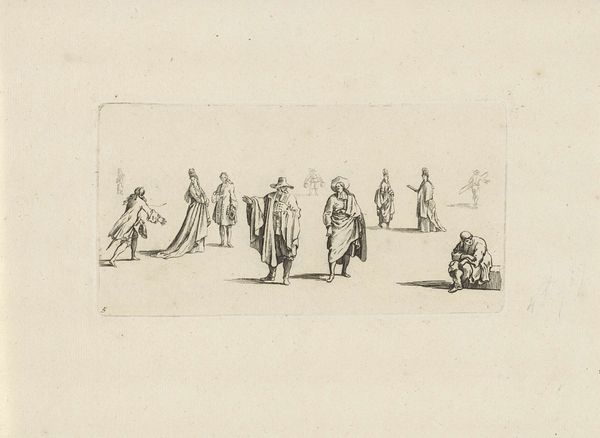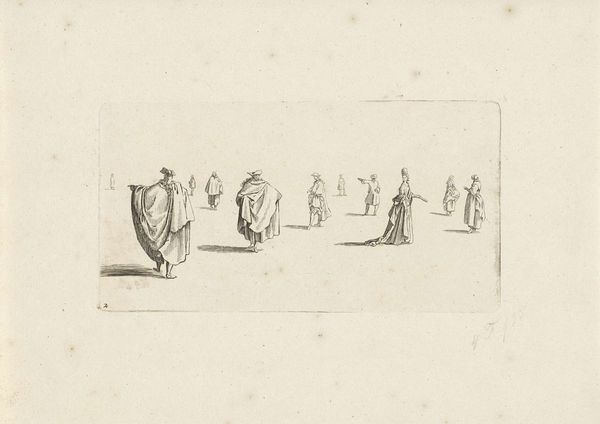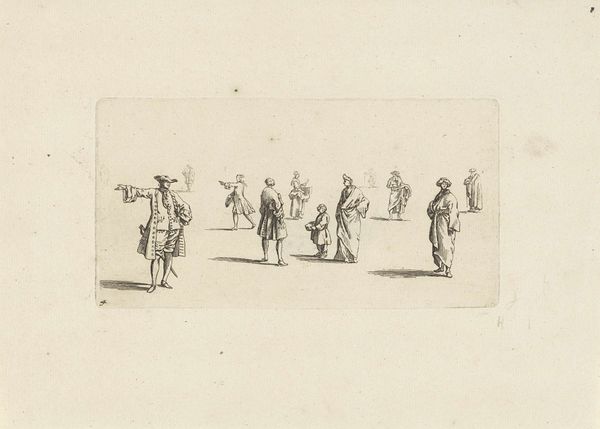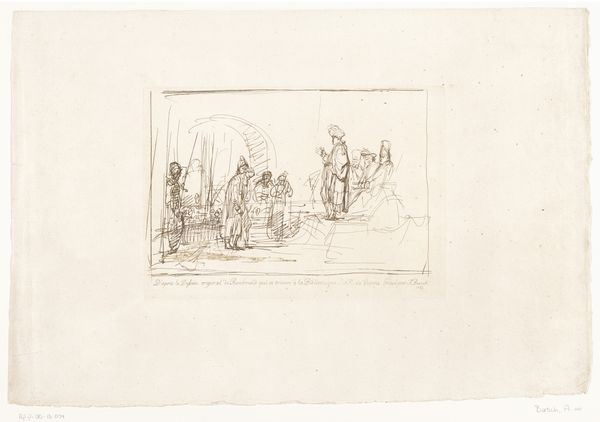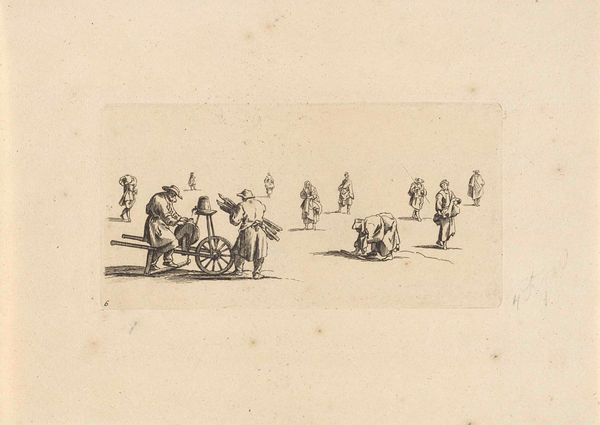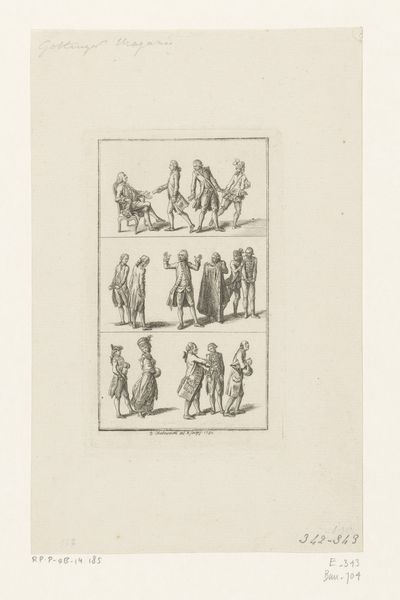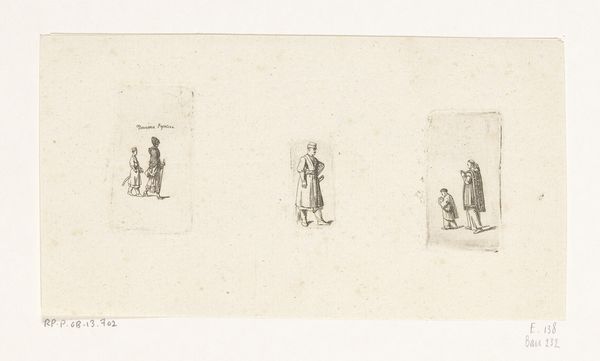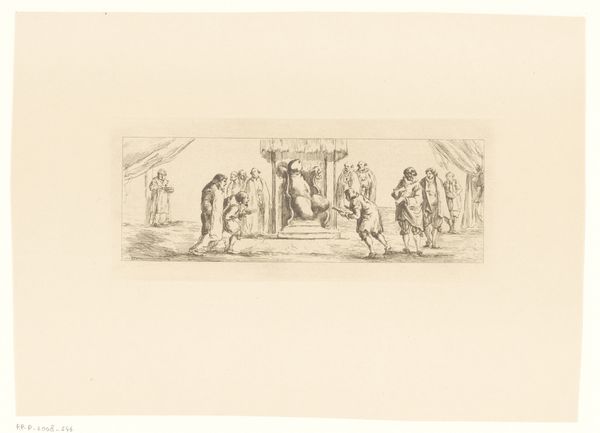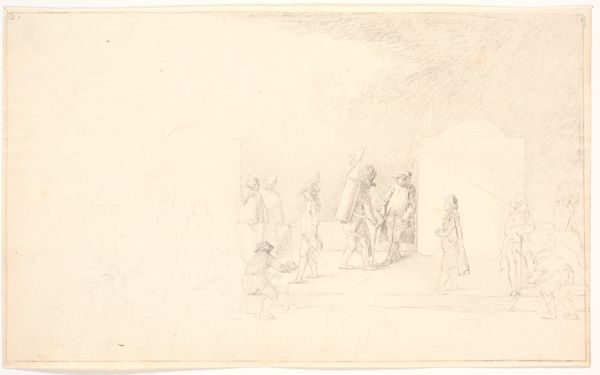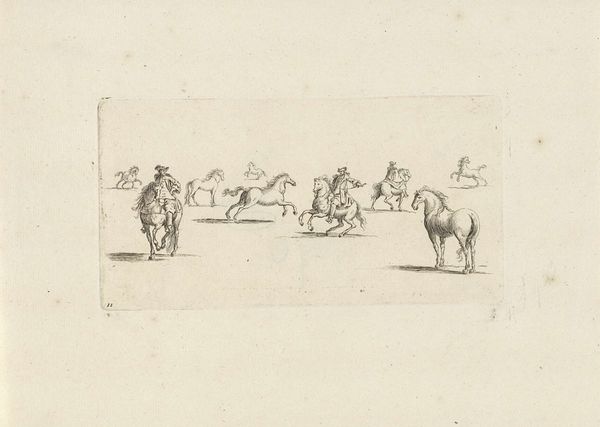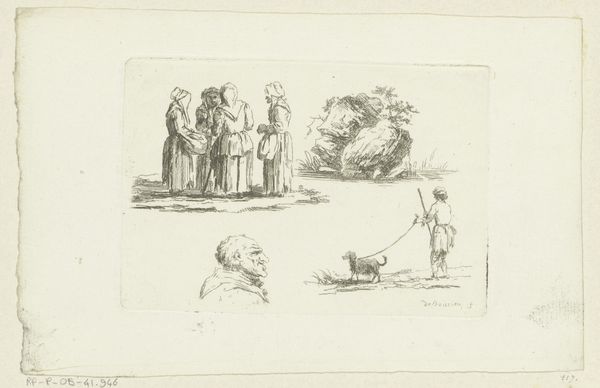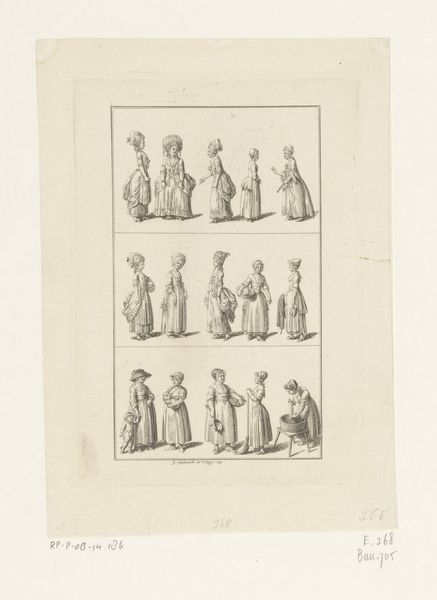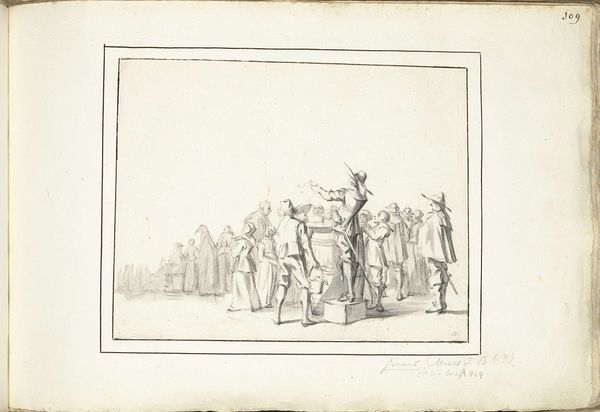
drawing, paper, ink, pen
#
portrait
#
drawing
#
light pencil work
#
baroque
#
figuration
#
paper
#
ink
#
pen-ink sketch
#
line
#
pen
#
genre-painting
Dimensions: height 80 mm, width 154 mm
Copyright: Rijks Museum: Open Domain
Curator: This is an interesting drawing titled “Studieblad met figuren in verschillende houdingen,” or “Study Sheet with Figures in Various Poses,” created by an anonymous artist sometime between 1675 and 1711. It’s currently held here at the Rijksmuseum. Editor: My initial impression is one of observation. The figures, rendered in pen and ink on paper, appear to be consciously displaying themselves, or perhaps under surveillance themselves, within this starkly minimalist setting. Curator: That minimalist backdrop really underscores the individuality of each figure. Considering the social context of the late 17th and early 18th centuries, these poses and garments likely signified specific social roles, aspirations, or even political allegiances. We might view it as a catalogue of societal identities. Editor: Yes, it reads almost like a tailor's sample book. I’m particularly interested in the use of line and shading. It seems almost rudimentary, yet effectively conveys texture and form. I wonder if this was a preparatory sketch, meant to inform a larger work. Curator: Absolutely. It speaks to the meticulous nature of Baroque-era artistry. But also, the very act of compiling such a 'sheet' highlights a society obsessed with categorizing and understanding its members. The pen and ink medium lends an immediacy and practicality to what might otherwise feel like theatrical presentations of gender. Editor: From a material perspective, we might consider the social currency of paper during this period. It speaks volumes about accessibility, privilege, and even artistic experimentation. Someone carefully procured these tools and devoted the necessary time to commit such scenes of possible leisured gentility to craft this image. Curator: The positioning and almost detached affect of the figures could indicate a period of political upheaval or heightened social awareness, or a shift in norms regarding status and representation. We must consider class tensions in post-Golden Age Netherlands and a rise in social performances by citizens who had earned upward mobility, for instance. Editor: Perhaps, it is a critical commentary on the production of identity within the Dutch elite. That anonymous label prompts one to ask about the agency and the status of this piece within the maker's material conditions of production and available resources. It opens many exciting interpretive threads for our listeners. Curator: I concur! Hopefully we've encouraged our audience to investigate beyond the immediate impressions and reflect on art’s deeper historical, political and sociological significance. Editor: And to appreciate the labor, social status, and materiality that shaped even seemingly simple drawings, granting us a deeper connection to the artisans and context that produced them.
Comments
No comments
Be the first to comment and join the conversation on the ultimate creative platform.
